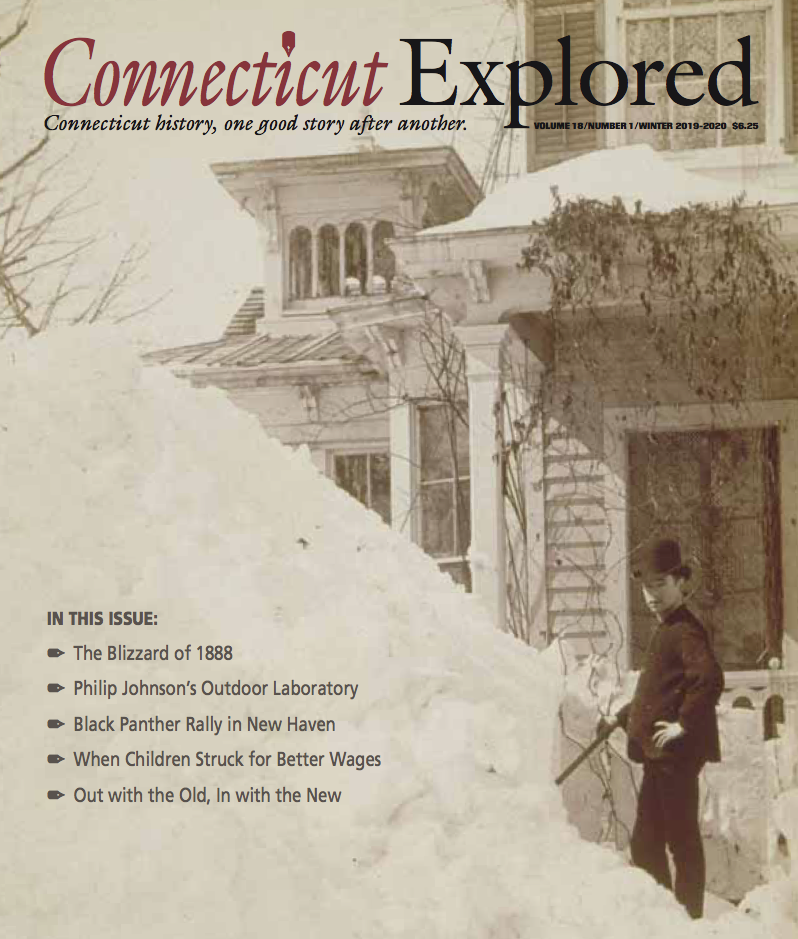(c) Connecticut Explored Inc. Winter 2019-2020
Subscribe/Buy the Issue!
When snow started falling across the state in the early hours of March 12, 1888, Connecticut residents thought nothing of it. It wasn’t unusual to have light to moderate snowfall in early March, and the forecast for that day had called for “fair weather, followed by rain.” Later that morning, amid moderate snowfall, most Connecticans headed out for work and school as usual, unfazed by the few inches of accumulation on the ground. By midday, however, the situation had drastically changed: Temperatures plummeted, the rate of snowfall increased, and fierce winds created whiteout conditions across not only Connecticut, but the entire northeastern United States. It was the first day of the Blizzard of 1888, a wicked three-day storm that ranks as the worst recorded blizzard in Connecticut history.
Within a few hours, nearly two feet of snow had accumulated in parts of the state, stranding thousands of women and men at their workplaces. By the time the storm blew offshore on March 14, some Connecticut towns reported snowfall amounts of nearly 50 inches—although exact amounts were nearly impossible to measure thanks to the gale-force winds that earned the storm the nickname “the Great White Hurricane.” Winds of over 60 miles per hour created massive snowdrifts that reached the second story windows of houses and buildings; the towns of Cheshire and New Haven recorded snow drifts nearly forty feet high. The wind also created dangerously cold conditions for anyone foolish enough to try and brave the storm; the air temperature measured 10 to 15 degrees below zero before wind chill was factored in.
For three days, life across the northeastern United States ground to a complete halt, as telephone and telegraph lines snapped and both dirt roads and railroads were completely impassable. The winds and snow drifts were strong enough to topple locomotives, and thousands of train passengers were stranded for days aboard stalled cars and at snowed-in train stations. Incredibly enough, the shared experience of digging out after the storm seemed to bring out plenty of neighborly goodwill—and even a sense of humor—among the residents of Connecticut, who helped dig out each other’s homes, and even posed for playful photographs amid snow tunnels and forts.
By the end of the week, more seasonable March temperatures helped melt most of the snowfall, but with a death toll of over 400 people and damages estimated in the tens of millions of dollars throughout the region, the Great White Hurricane would be a storm no one would soon forget.
This story first appeared as the March 12, 2019 entry for TODAYINCTHISTORY.com, a collaboration between the Office of the State Historian and CT Humanities. TODAYINCTHISTORY.com is produced by team members Kathy Foley, J Holt, Gregg Mangan, Rachel Smith Hale, and Walt Woodward. Sign up to receive free daily updates by e-mail at TODAYINCTHISTORY.com.

